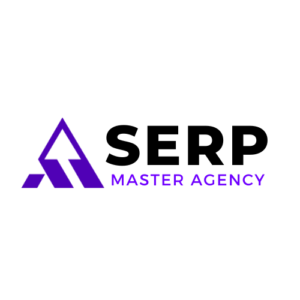If you’ve ever wondered how to optimize your landing pages for maximum impact, you’re in the right place. Implementing the right SEO strategies can make a significant difference in your conversion rates and overall success.
By focusing on key elements such as keyword research, on-page optimization, and mobile-friendly design, you can create landing pages that not only attract visitors but also compel them to take action.
But that’s just the beginning – there are seven essential strategies in total that we’ll discuss to help you elevate your landing pages to the next level.
Key Takeaways
- Conduct thorough keyword research to identify high-volume terms and incorporate long tail keywords for niche targeting.
- Craft compelling meta titles and descriptions with clear calls-to-action, keeping titles under 60 characters and positioning primary keywords strategically.
- Prioritize mobile-friendly design and user experience by adapting layouts, optimizing content for fast loading, and providing seamless browsing across devices.
- Focus on high-quality content creation, utilize A/B testing for elements like headlines and button colors, and continuously monitor and optimize for conversion rates.
Keyword Research
When conducting keyword research for your landing pages, focus on identifying high-volume, relevant terms to optimize your content effectively. Start by exploring long tail keywords, which are specific phrases that target a niche audience. These keywords often have less competition and can drive more qualified traffic to your site. Conduct competitor analysis to see what keywords your rivals are ranking for and identify gaps in your own strategy.
Utilize tools like SEMrush or Ahrefs to gather data on search volume, keyword difficulty, and trends. Look for keywords that strike a balance between being popular and achievable for your website. By incorporating long tail keywords into your content, you can attract users who are closer to making a purchasing decision.
Additionally, analyzing your competitors’ keyword tactics can provide valuable insights into successful strategies within your industry.
On-Page SEO Optimization
To enhance the effectiveness of your landing pages, optimizing for on-page SEO is crucial for boosting visibility and attracting qualified traffic. When it comes to on-page SEO optimization, attention to detail is key. Here are some strategies to help you improve your landing page performance:
- Image Optimization: Ensure your images are compressed for faster loading times, include descriptive alt text for accessibility, and use relevant file names to boost SEO.
- User Experience: Create a seamless browsing experience by optimizing your page layout, reducing clutter, and ensuring easy navigation for visitors.
- Internal Linking: Utilize internal links strategically to guide visitors to other relevant pages on your site, increasing engagement and time spent on your landing page.
- Content Structure: Organize your content with headings, subheadings, and bullet points to improve readability and help search engines understand the context of your page.
Implementing these on-page SEO tactics won’t only enhance your search engine visibility but also provide a better user experience, ultimately leading to higher conversions.
Compelling Meta Titles and Descriptions
Crafting compelling meta titles and descriptions is crucial for optimizing your landing pages for search engines. Your meta title serves as the first impression of your page in search results, making it essential to be concise yet descriptive to attract clicks.
Additionally, following best practices for meta descriptions, such as including relevant keywords and a clear call-to-action, can further enhance your page’s visibility and click-through rates.
Meta Title Importance
Maximizing the impact of your website’s meta titles and descriptions is essential for optimizing your landing page’s SEO performance. When crafting your meta titles, consider the following:
- Meta Title Length: Keep your title under 60 characters to ensure it displays fully on search engine results pages.
- Keyword Placement: Position your primary keyword close to the beginning of the title for better visibility.
- Clarity and Relevance: Make sure your title accurately reflects the content on your landing page.
- Engagement Factor: Craft titles that entice users to click by being compelling and relevant.
Description Best Practices
When optimizing your landing page’s SEO performance, ensuring your meta descriptions are compelling and relevant is just as crucial as perfecting your meta titles. Craft descriptions that accurately depict your page content, incorporating relevant keywords naturally. Focus on creating concise yet engaging descriptions that entice users to click through to your landing page. Additionally, strategic call-to-action placement within your meta description can significantly impact your conversion rates.
Image optimization plays a vital role in attracting users, enhancing user experience, and boosting your SEO ranking. By fine-tuning your meta descriptions with a user-centric approach, you can improve click-through rates and drive more conversions effectively. Track the effectiveness of your descriptions by monitoring conversion rate tracking metrics.
Mobile-Friendly Design
Optimizing landing pages for mobile devices involves prioritizing user experience through responsive design and fast loading times. When it comes to creating mobile-friendly landing pages, there are key factors to consider to ensure a seamless experience for your visitors:
- Responsive Layout: Ensure your landing page layout adapts to different screen sizes, providing a consistent experience across all devices.
- Fast Loading Times: Optimize images and content to reduce load times, keeping visitors engaged and preventing them from bouncing off.
- Clear Call-to-Actions: Make sure your CTAs are prominently displayed and easily clickable on mobile screens for higher conversion rates.
- Mobile-Friendly Forms: Simplify forms by reducing fields and using mobile-friendly input methods like checkboxes or dropdowns for improved usability.
High-Quality Content Creation
Craft compelling and informative content that resonates with your target audience and aligns with your business goals for effective high-quality content creation. To enhance engagement tactics, consider incorporating elements of visual storytelling into your content. Visual storytelling involves using images, videos, and graphics to convey your message in a more captivating and memorable way.
By leveraging visual elements, you can create a more immersive experience for your audience, making it easier for them to connect with your brand and message.
| Visual Storytelling | Benefits | Examples |
| Infographics | Simplify complex information | An infographic showcasing key statistics or steps |
| Videos | Increase user engagement | Product demonstrations or customer testimonials |
| Interactive Content | Encourage user interaction | Quizzes, calculators, or interactive maps |
Fast Loading Speed
To ensure your high-quality content resonates effectively with your target audience and drives optimal engagement, the fast loading speed of your landing page becomes a critical factor in enhancing user experience and overall performance.
- Image Optimization: Compress images without compromising quality to reduce page load times.
- Caching Techniques: Implement browser caching to store frequently accessed data locally, enhancing loading speed for returning visitors.
- User Experience: Prioritize quick loading to prevent user frustration and increase retention rates.
- Conversion Rate: Faster loading speed positively impacts conversion rates by reducing bounce rates and increasing engagement.
A/B Testing and Optimization
Enhance your landing page’s performance through rigorous A/B testing and optimization strategies to maximize conversion rates and user engagement. A/B testing involves creating two versions of your landing page (A and B) with slight variations in design, content, or calls-to-action.
By directing traffic to both versions and analyzing which one performs better in terms of conversion rates, you can make data-driven decisions to optimize your page for higher user engagement and increased conversions.
To conduct effective A/B testing, focus on elements that directly impact user experience, such as headline copy, button colors, form lengths, or image placements. Use tools like Google Optimize or Optimizely to set up and track your experiments accurately. Remember that A/B testing is an ongoing process, requiring continuous monitoring and iteration to fine-tune your landing page for optimal results.
Frequently Asked Questions
How Can I Track the Success of My High-Converting Landing Page Through Analytics?
To track the success of your high-converting landing page through analytics, focus on conversion tracking and user behavior. Use analytics to monitor performance metrics and optimize accordingly. Understand what works and adapt for better results.
Are There Any Specific Design Elements or Features That I Should Avoid on a High-Converting Landing Page?
When designing high-converting landing pages, avoid overwhelming color schemes that clash or distract visitors. Opt for a cohesive color palette based on color psychology principles. Similarly, steer clear of overly complex typography choices that hinder readability and user experience.
How Can I Effectively Incorporate Social Proof on My Landing Page to Improve Conversions?
To effectively boost conversions, ensure social proof like testimonials, case studies, user reviews, and trust badges are prominent on your landing page. By showcasing positive experiences and trust indicators, you can instill confidence in your visitors.
What Are Some Common Mistakes to Avoid When Creating a High-Converting Landing Page?
When creating a high-converting landing page, avoid common pitfalls like cluttered design and lack of clear call-to-action. Focus on essential elements such as compelling headlines, captivating visuals, and easy navigation. Follow best practices to maximize conversions.
How Can I Optimize My Landing Page for Voice Search Queries?
When optimizing content for voice search, focus on natural language and long-tail keywords. Utilize Voice Search Optimization techniques like structuring content in a conversational tone, answering common questions concisely, and ensuring mobile-friendliness for better user experience.
Conclusion
In conclusion, implementing these 7 SEO strategies for high-converting landing pages can significantly improve your online visibility and drive more traffic to your website.
By conducting thorough keyword research, optimizing on-page elements, and creating compelling content, you can attract and engage your target audience effectively.
Remember, the proof is in the pudding – so don’t be afraid to test and optimize your landing pages to ensure they’re performing at their best.

Suraj Rana is a highly regarded SEO expert specializing in the dental industry. His expertise lies in crafting strategic SEO marketing plans to help new or expanding businesses increase their online visibility and attract more customers. Suraj Rana’s skills extend to improving website rankings and boosting organic search visibility, thereby enhancing web traffic and return on investment for businesses.


